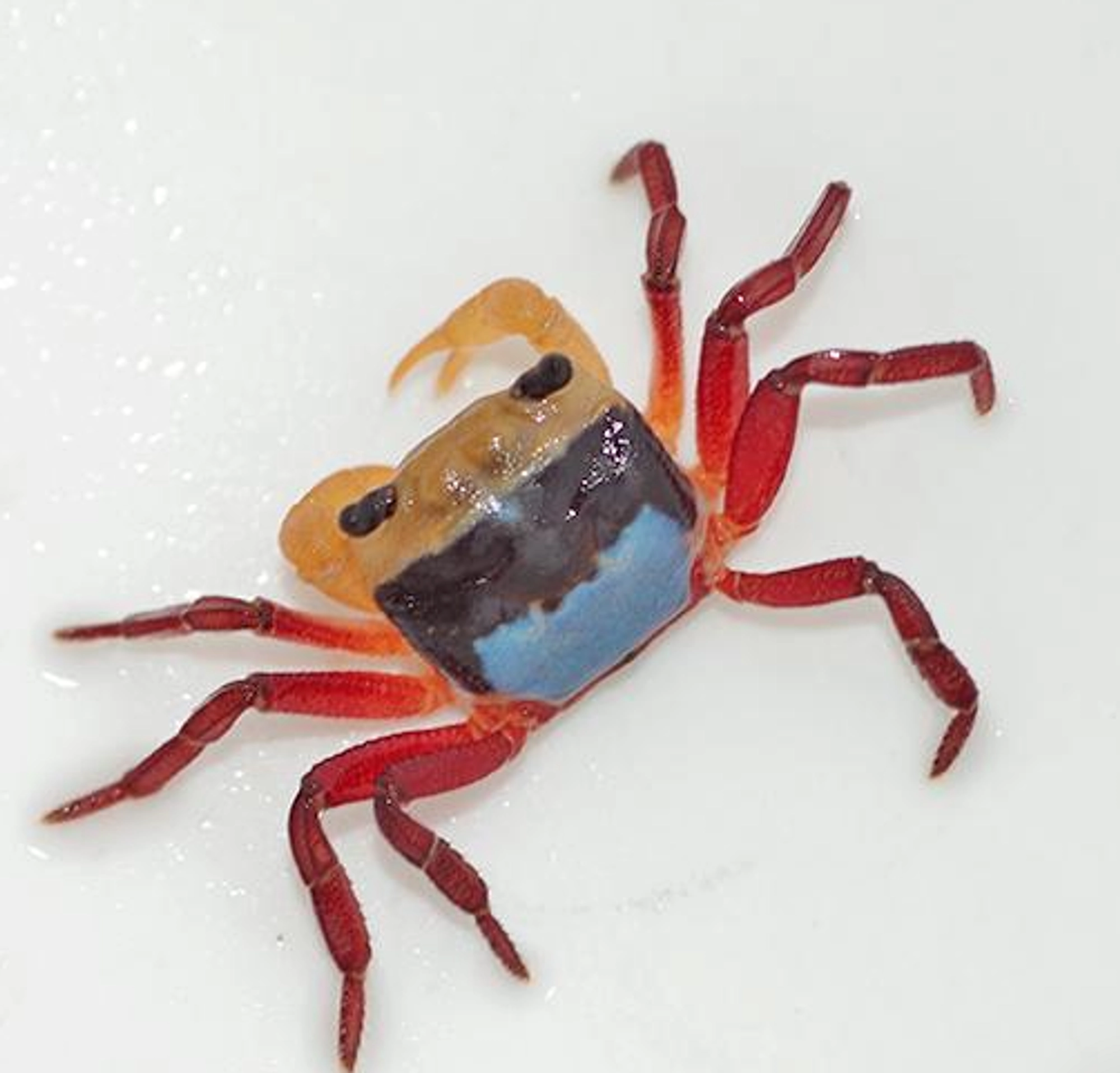

Product Details

Temperament
Semi Aggressive
"Introduce exotic charm to your aquarium with Lepidothelphusa sp. Tricolour Borneo! This unique freshwater crab is known for its vibrant tricolour pattern and fascinating behavior."
Overview: Lepidothelphusa sp. Tricolour Borneo is an exotic and visually striking freshwater crab species hailing from the lush rainforests of Borneo. Renowned for its vibrant tricolour pattern, this crab adds an element of intrigue and beauty to any aquarium. Suitable for experienced aquarists, Lepidothelphusa sp. Tricolour Borneo is a fascinating addition that requires specific care to thrive in a home aquarium setting.
Appearance:
- Coloration: The Tricolour Borneo crab showcases a stunning combination of red, blue, and white hues across its carapace and limbs. This vivid coloration makes it a standout in any tank setup.
- Body Shape: Like other freshwater crabs, they have a broad, flat carapace with eight walking legs and two prominent claws. Their compact and robust build is well-suited for navigating both water and land environments within the tank.
- Size: These crabs typically reach a size of about 2-3 inches (5-7.5 cm) in carapace width, making them relatively small but eye-catching inhabitants.
Water Conditions: To ensure the health and well-being of Lepidothelphusa sp. Tricolour Borneo, maintain the following water conditions:
- Temperature: 75-82°F (24-28°C).
- pH Range: 6.5-7.5.
- Water Hardness: 4-12 dGH.
- Tank Size: A minimum of 20 gallons is recommended, with additional space required for a land area within the tank.
Tank Setup: Creating an ideal habitat for your Tricolour Borneo crab involves several considerations:
- Substrate: Use a mix of sand and smooth gravel to mimic their natural habitat. Providing both aquatic and terrestrial areas is crucial.
- Decor: Incorporate rocks, driftwood, and dense vegetation to offer hiding spots and climbing opportunities. Ensure secure and stable structures to prevent collapse.
- Filtration: A robust filtration system is essential to maintain clean water, as crabs are sensitive to poor water quality. A gentle water flow is preferred.
- Lighting: Moderate lighting is sufficient. Ensure that both the aquatic and terrestrial areas receive appropriate light and shade.
Tank Mates: Tricolour Borneo crabs can be semi-aggressive and territorial. Choose tank mates carefully:
- Compatible Species: Small, fast-moving fish that inhabit the upper water column, such as danios or tetras. Other invertebrates, like shrimp or snails, can also coexist if the tank is spacious enough.
- Incompatible Species: Avoid slow-moving or bottom-dwelling fish that might become targets of aggression or predation. Large or aggressive fish can also pose a threat to the crabs.
Feeding Habit: Tricolour Borneo crabs are omnivores with a varied diet. Provide a balanced diet to meet their nutritional needs:
- Staple Diet: High-quality crab pellets or sinking wafers.
- Supplements: Offer a variety of fresh foods, including blanched vegetables (spinach, zucchini), algae wafers, and protein sources such as bloodworms, brine shrimp, and small pieces of fish or shrimp.
- Feeding Frequency: Feed them 2-3 times a week, ensuring that food is accessible in both aquatic and terrestrial areas of the tank.
Care and Maintenance: Regular care and maintenance are crucial for the well-being of your Tricolour Borneo crab:
- Water Changes: Perform weekly water changes of 20-30% to maintain optimal water conditions and prevent the buildup of waste.
- Health Monitoring: Watch for signs of common crab ailments such as shell rot or parasitic infections. Ensure the crab molts successfully, as molting is a critical process for their growth and health.
- Behavioral Observation: Observe their behavior regularly. These crabs are active and curious, often exploring their environment. A healthy crab will be mobile and interactive.
Breeding: Breeding Lepidothelphusa sp. Tricolour Borneo in captivity can be challenging and is not commonly achieved due to their specific requirements and complex life cycle:
- Pair Selection: Ensure you have a compatible male and female pair. Condition them with high-quality foods to enhance breeding readiness.
- Spawning Environment: Provide a separate breeding tank with optimal water conditions and ample hiding spots. Mimic their natural environment as closely as possible.
- Larval Care: If breeding is successful, the larvae will need brackish water conditions to develop, which adds complexity to the breeding process.
Lepidothelphusa sp. Tricolour Borneo
Product Options
Regular
Delivery
 Iven Betta Bukit Timah Clementi
Iven Betta Bukit Timah Clementi Aquarium Fishes, Tanks & Supplies From Iven Betta Bukit Timah Clementi


 SG
SG



